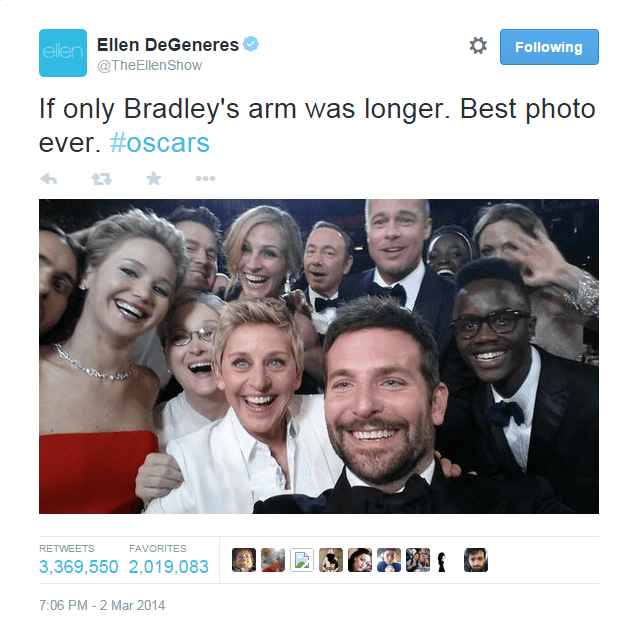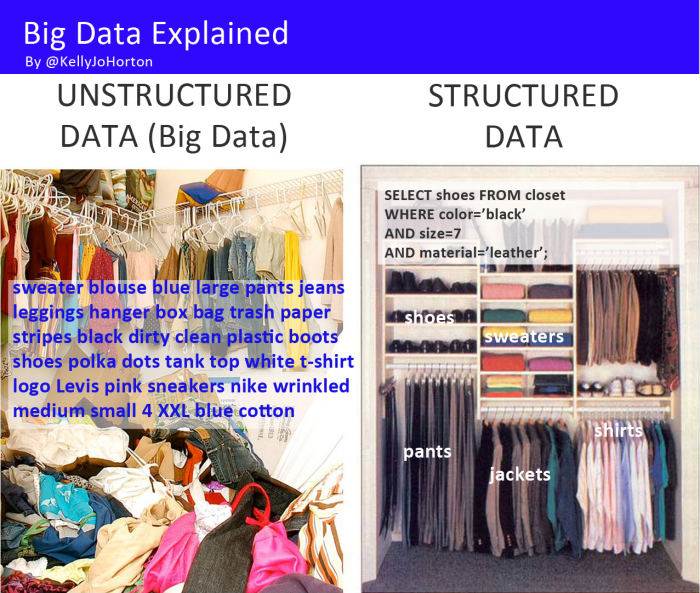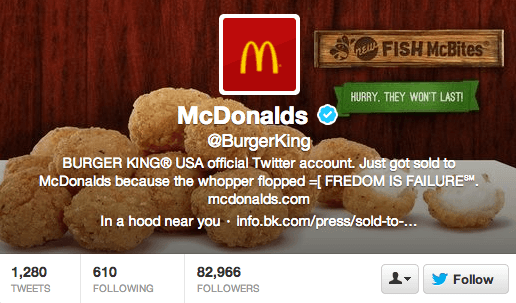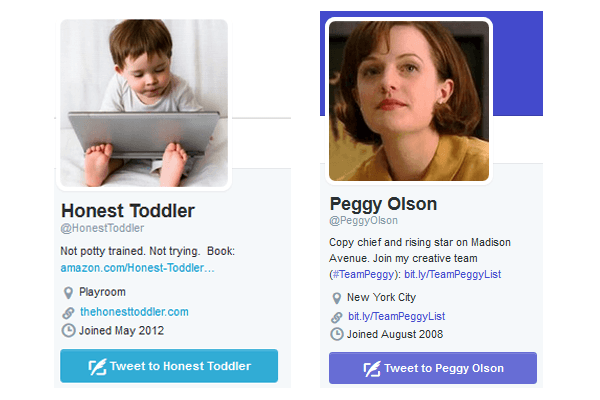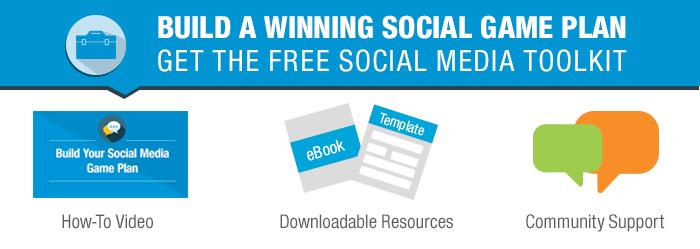Do you sometimes feel completely out of the loop when you’re in a meeting at work and your social media millennials start throwing out terms like “mentions” and “brandjacking?” When someone mentions “reach” do you think of toothbrushes? It’s okay, I’ve got your back. I wasn’t born with a smart phone in my hand either, but I’ve spent years in the trenches of social media marketing and I’m here to help.
Here are 20 terms you’ll hear in everyday conversation when discussing social media.
Amplification
What happens when the social media volume gets turned up to 11. When an industry influencer shares a link to a piece of your content, your reach (potential audience) is amplified. It’s like having a cyber megaphone. If only we could all get retweeted by Ellen DeGeneres. This famous Oscar selfie got retweeted over three million times, making it the most retweeted Twitter post ever.
Big Data
Big Data is kind of like the legend of Big Foot – you’ve heard about it, seen some fuzzy pictures, but never actually experienced it in person. Big Data is the massive pool of data that is collected every second of every day about your behavior – both online and offline. It is stored in a big unstructured pile that some refer to as a “data lake.” It’s kind of like that one closet everyone has that’s totally disorganized, because you’ve just been stuffing odds and ends in there for years. You ignore it because you have no idea how to make sense of what’s in that closet. Businesses have been doing the same thing with Big Data for years. Now companies have a multitude of NoSQL* options to help sort through that data. You, however, still have that closet.
Brandjacking
When a person takes over the online identity of another person or company–with either playful or malicious intent–to control that business’s or person’s brand equity. Fan pages are a form of positive brandjacking. Having someone hack into your Twitter account and post negative messages about your brand, not so positive. Remember when someone hacked the McDonald’s Twitter account and turned it into a Burger King branding machine?
Deflection Rate
Your deflection rate is measured by how quickly you are able to move the public naysayers off social media and into a controlled one-on-one environment like email or a phone call. If someone is trashing your brand on Twitter, ask yourself WWCND (What Would Chuck Norris Do)? Reflect and deflect.
Earned media
Any publicity you haven’t paid for – good or bad – created by a third party (e.g.,someone on social media). If someone writes an unprompted, unpaid article about your company or product, that’s earned media. If I give you a bad review on Yelp, that’s earned media, even though it’s publicity you didn’t want. Celebrities have more clout than business leaders, so the brass ring here would be Sofia Vergara posting a picture of herself with your product on Instagram.
Engagement Rate
In the old days Elizabeth Taylor held the record for highest engagement rate, but that’s not what we’re talking about here. An engagement rate in the context of social media is defined as a percentage of people who viewed a post or piece of content and engaged with it (commented, shared, liked, etc.).
Handle
A handle is an identifier on a social network. Remember the old pickup line, “Hey baby, what’s your sign?” Who cares what their sign is if you have their handle (which will probably tell you more than you ever need to know)? I’m talking to you, @PeggyOlson and @HonestToddler.
Hashtag
A tagging mechanism that refines a search. My first introduction to a hashtag was in the form of a #2 pencil, which was the required writing instrument for every major test in my entire academic experience. Back then it was called a “pound symbol.” #BackInTheDay
Impressions
The number of times your connections may have seen your content. Brands usually share a piece of content multiple times, because they know they probably won’t get all eyeballs on it the first time around. This is especially common (and somewhat annoying) on Twitter. It’s common courtesy to use the hashtag #ICYMI (In Case You Missed IT) when posting content for a second, third or fourth time, in order to let people know they may have already seen that content.
Influencer
An influencer is like the ringleader in the popular group in high school. Remember that girl? If she said it was cool to wear Ugg boots to school, everyone questioned their lack of fashion sense and rushed out to buy a pair of Ugg boots. Well, she’s now got a YouTube channel and an audience of millions who hang on her every recommendation. You should probably contact her and ask her to mention your brand.
Klout Score
Klout is a company that measures your level of influence on social media. Your score (1-100) is determined by how much interest you generate when you post on various social media outlets. We all like to pretend it’s not important, while we secretly compare our scores with our peers.
Meme (Internet)
Let’s get one thing straight. It’s pronounced meem not me-me. It’s an idea, behavior or style that is passed from person to person, these days via social media. Memes originated long before the Internet, but really took off online with the infamous “I can has cheezburger?” cat.
Mention
In prehistoric times (before Twitter and Facebook), you could complain about, or praise (mention) a product to your friends and that’s as far as it would go. But now every mention has the potential to reach millions thanks to social media.
@Delta love…
@Delta fail…
Newsjacking/Trendjacking
I put these two in the same category because they both involve using a trending subject to get yourself or your brand noticed. Brands who have tried to post something clever on Twitter, with a trending hashtag related to a natural disaster or completely irrelevant topic, have often had it backfire. However, there were some famously clever newsjacking tweets during the 2013 Super Bowl blackout, the most famous of which came from the @Oreo Twitter account.
 Reach
Reach
The number of people who may have seen your content. If you share a link on Twitter to your 1,000 followers, you have a reach of 1,000. If one of your followers shares that link, your reach then extends to their network of followers. It’s kind of like that Faberge shampoo commercial from the 80’s, “…and they’ll tell two friends, and so on, and so on…” I realize if you’re under 30 you may not get this cultural reference, so just go Google “Faberge shampoo” and watch a young Heather Locklear explain the concept of reach in the 80’s.
Sentiment Analysis
This is the process of listening for certain words and phrases on social media, and categorizing them by sentiment (i.e. positive, negative, neutral). For example, seeing your brand name coupled with the word “love” would usually be considered a positive sentiment. Finding your brand name coupled with the hashtag of #FAIL on a regular basis should be red flag. Or, as seen below, a positive sentiment (#ilovecomcast) that turns negative with the addition of sarcasm (#killme).

Share of Voice
This is a measurement of how often your brand is mentioned in conjunction with a specific term, compared to your competitors. If you are one of three major manufacturers of something called a FidgetWidget, you need to pay attention to social media mentions about FidgetWidget. Are people mentioning your brand or someone else’s when they post something? Are they mentioning another brand negatively? If so, that could be an opportunity for you to swoop in and save the day.
Social Selling
Successful sales teams know that the likelihood of closing a deal increases when you establish a relationship with a prospect. Social selling is a technique that allows you to get to know a prospect before you send that first email or place that first phone call. For example, if you took the time to look at what I have published on LinkedIn and posted on Twitter in the past month, you would know I’m an avid runner who is very active in the digital marketing arena. You should also have information about what pages and videos I’ve viewed on your website, and what content I have shared. Chances are I won’t hang up on you if you start the conversation with a common interest instead of a hard sell.
SoLoMo
SoLoMo is an abbreviation for Social, Location-based Mobile marketing. It is the practice of engaging with someone on a mobile device based on their location. It’s like Tinder for brands. (Tinder = a matchmaking mobile app that will match you with anyone within a specific radius of your current location.)
Twitter Canoe
One of the most annoying tweets on the planet is one that contains so many mentions that it’s just unreadable. Here is an excellent example of how to call people out for creating a Twitter Canoe:
(BTW, a “tweep” is a cross between Twitter and peeps, a.k.a. a Twitter friend)
Fake it until you make it
You may not be a digital native, but you now have the basic vocabulary to fake it until you make it. Just don’t pull out your flip phone in a meeting. It’s a dead giveaway.
* NoSQL (Not Only SQL) is a term used to describe the many methods used to retrieve non tabular data.
And, if you’re ready to put your new vocabulary to use, get the rest of the skills you need right here in Act-On’s free Social Media Marketing Game Plan toolkit:
Image Credits:
Flip Phone photo by benyclark. Used under a Creative Commons 2.0 license.
Useful Businessman Expressions Collection by Denis Pepin, Dollar Photo Club.

